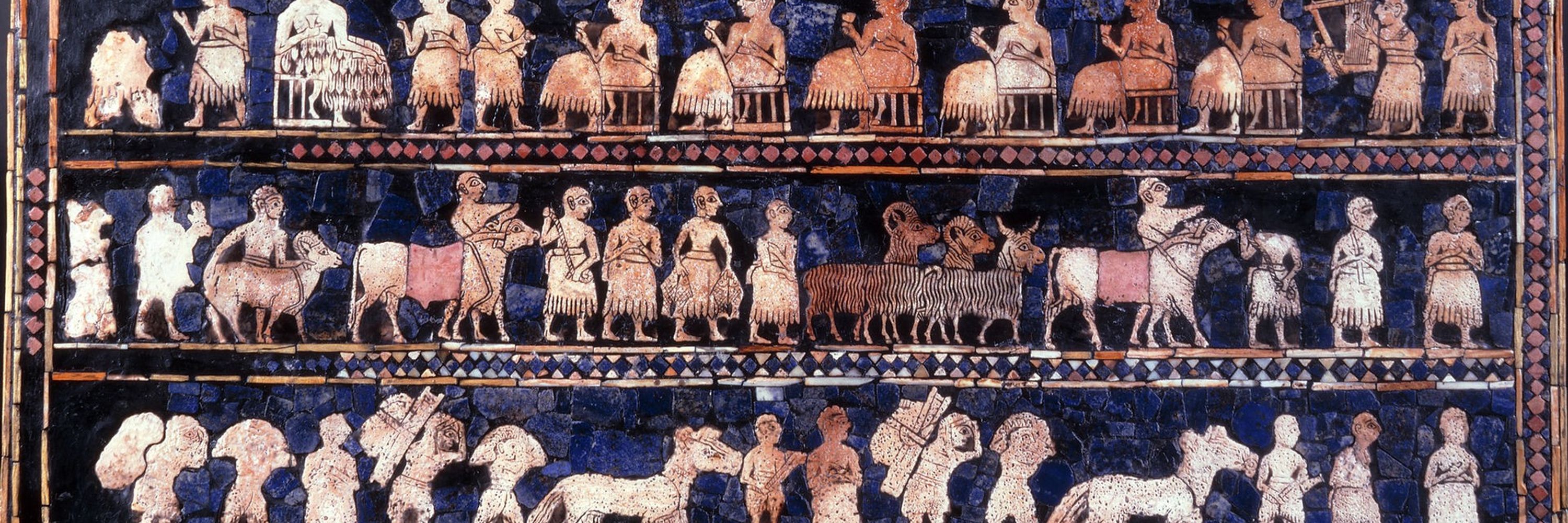
Ola Olsson
@oolsson.bsky.social
Professor of Economics and HoD at University of Gothenburg
Economic growth, development economics and economic history.
Author of "Paleoeconomics: Climate Change and Economic Development in Prehistory”
https://sites.google.com/site/econolaols/home
Economic growth, development economics and economic history.
Author of "Paleoeconomics: Climate Change and Economic Development in Prehistory”
https://sites.google.com/site/econolaols/home
Just presented my paper on weather shocks and monument construction during the Classic Maya period at the WEHC in Lund. Happy for the great lineup of very interesting papers and presenters and for the turnout. Also thrilled to find my book in the book exhibition!




July 30, 2025 at 10:31 AM
Just presented my paper on weather shocks and monument construction during the Classic Maya period at the WEHC in Lund. Happy for the great lineup of very interesting papers and presenters and for the turnout. Also thrilled to find my book in the book exhibition!
Effective enviromental circumscription was created through an interplay between Nile floods (proxied by rainfall over Highland Ethiopia) and Mediterranean rains that determined the productivity of the hinterland.

May 30, 2025 at 10:44 AM
Effective enviromental circumscription was created through an interplay between Nile floods (proxied by rainfall over Highland Ethiopia) and Mediterranean rains that determined the productivity of the hinterland.
It is really efficient to combine a great workshop on historical economics with paleoeconomic field research on Ötzi in his Bolzano museum.

January 26, 2025 at 12:11 PM
It is really efficient to combine a great workshop on historical economics with paleoeconomic field research on Ötzi in his Bolzano museum.
Thanks for a wonderful workshop at a fantastic location!



January 25, 2025 at 11:28 PM
Thanks for a wonderful workshop at a fantastic location!
Trade and FDI between major blocs after Russian’s invasion of Ukraine are decreasing towards levels during the Cold War, claims IMF economists #ASSA2025. Probably particularly bad for small, trade-oriented countries like Sweden.

January 3, 2025 at 8:17 PM
Trade and FDI between major blocs after Russian’s invasion of Ukraine are decreasing towards levels during the Cold War, claims IMF economists #ASSA2025. Probably particularly bad for small, trade-oriented countries like Sweden.
We propose (and formally model) that in the Classic Maya setting, with numerous small competing city-states where exit was always an option, monument construction functioned as a costly signaling device about state capacity, designed to attract a mobile labor for future control of revenue. 4/5

December 30, 2024 at 4:14 PM
We propose (and formally model) that in the Classic Maya setting, with numerous small competing city-states where exit was always an option, monument construction functioned as a costly signaling device about state capacity, designed to attract a mobile labor for future control of revenue. 4/5
A text analysis of 2.2 million words from deciphered hieroglyphic inscriptions on monuments, further shows higher frequencies of terms associated with war or violent conflict during periods of drought. 3/5


December 30, 2024 at 4:14 PM
A text analysis of 2.2 million words from deciphered hieroglyphic inscriptions on monuments, further shows higher frequencies of terms associated with war or violent conflict during periods of drought. 3/5
We analyze information from 870 dated monuments from 110 Maya settlements. Correlating this dataset with a paleoclimatic proxy record for variations in annual rainfall, we find – perhaps counter-intuitively – that monumental construction activity was more intense during drought years. 2/5

December 30, 2024 at 4:14 PM
We analyze information from 870 dated monuments from 110 Maya settlements. Correlating this dataset with a paleoclimatic proxy record for variations in annual rainfall, we find – perhaps counter-intuitively – that monumental construction activity was more intense during drought years. 2/5
In a new wp "The Political Economy of Bread and Circuses", we examine the tradeoff in early states between productivity-enhancing infrastructure (like irrigation systems) and non-productive architecture (stelae, altars, etc) by studying the Classic Maya (250-950 CE). 1/5 dx.doi.org/10.2139/ssrn...


December 30, 2024 at 4:14 PM
In a new wp "The Political Economy of Bread and Circuses", we examine the tradeoff in early states between productivity-enhancing infrastructure (like irrigation systems) and non-productive architecture (stelae, altars, etc) by studying the Classic Maya (250-950 CE). 1/5 dx.doi.org/10.2139/ssrn...
More than half of the book is focused on the evolution of domestication and sedentary agriculture by 12 kya and the emergence of complex societies such as the first states in Mesopotamia, Egypt, China, Indus and the Americas. 5/6

November 20, 2024 at 11:13 AM
More than half of the book is focused on the evolution of domestication and sedentary agriculture by 12 kya and the emergence of complex societies such as the first states in Mesopotamia, Egypt, China, Indus and the Americas. 5/6
During warm interglacials, hominins dispersed widely and there was a growth in food production and in population levels. During glacial conditions, hominins sheltered in a few fertile refugia where competition was extremely high and innovation necessary for survival. 4/6

November 20, 2024 at 11:13 AM
During warm interglacials, hominins dispersed widely and there was a growth in food production and in population levels. During glacial conditions, hominins sheltered in a few fertile refugia where competition was extremely high and innovation necessary for survival. 4/6
It also introduces a "Climate Pulse Model" (CPM) of human development, proposing that the main driver of human evolution is the recurring glacial cycles in temperature, precipitation, and sea levels. 3/6

November 20, 2024 at 11:13 AM
It also introduces a "Climate Pulse Model" (CPM) of human development, proposing that the main driver of human evolution is the recurring glacial cycles in temperature, precipitation, and sea levels. 3/6
It outlines a paleoeconomic model based on the fundamental assumption of a coevolution of five factors of production; the natural environment, human capital, social capital, physical capital, and technological knowledge. 2/6

November 20, 2024 at 11:13 AM
It outlines a paleoeconomic model based on the fundamental assumption of a coevolution of five factors of production; the natural environment, human capital, social capital, physical capital, and technological knowledge. 2/6


